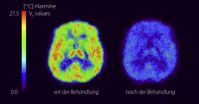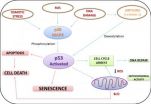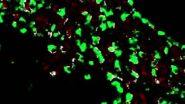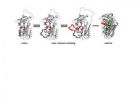(Press-News.org) Prolonged exposure to loud noise alters how the brain processes speech, potentially increasing the difficulty in distinguishing speech sounds, according to neuroscientists at The University of Texas at Dallas.
In a paper published this week in Ear and Hearing, researchers demonstrated for the first time how noise-induced hearing loss affects the brain's recognition of speech sounds.
Noise-induced hearing loss (NIHL) reaches all corners of the population, affecting an estimated 15 percent of Americans between the ages of 20 and 69, according to the National Institute of Deafness and Other Communication Disorders (NIDCD).
Exposure to intensely loud sounds leads to permanent damage of the hair cells, which act as sound receivers in the ear. Once damaged, the hair cells do not grow back, leading to NIHL.
"As we have made machines and electronic devices more powerful, the potential to cause permanent damage has grown tremendously," said Dr. Michael Kilgard, co-author and Margaret Fonde Jonsson Professor in the School of Behavioral and Brain Sciences. "Even the smaller MP3 players can reach volume levels that are highly damaging to the ear in a matter of minutes."
Before the study, scientists had not clearly understood the direct effects of NIHL on how the brain responds to speech.
To simulate two types of noise trauma that clinical populations face, UT Dallas scientists exposed rats to moderate or intense levels of noise for an hour. One group heard a high-frequency noise at 115 decibels inducing moderate hearing loss, and a second group heard a low-frequency noise at 124 decibels causing severe hearing loss.
For comparison, the American Speech-Language-Hearing Association lists the maximum output of an MP3 player or the sound of a chain saw at about 110 decibels and the siren on an emergency vehicle at 120 decibels. Regular exposure to sounds greater than 100 decibels for more than a minute at a time may lead to permanent hearing loss, according to the NIDCD.
Researchers observed how the two types of hearing loss affected speech sound processing in the rats by recording the neuronal response in the auditory cortex a month after the noise exposure. The auditory cortex, one of the main areas that processes sounds in the brain, is organized on a scale, like a piano. Neurons at one end of the cortex respond to low-frequency sounds, while other neurons at the opposite end react to higher frequencies.
In the group with severe hearing loss, less than one-third of the tested auditory cortex sites that normally respond to sound reacted to stimulation. In the sites that did respond, there were unusual patterns of activity. The neurons reacted slower, the sounds had to be louder and the neurons responded to frequency ranges narrower than normal. Additionally, the rats could not tell the speech sounds apart in a behavioral task they could successfully complete before the hearing loss.
In the group with moderate hearing loss, the area of the cortex responding to sounds didn't change, but the neurons' reaction did. A larger area of the auditory cortex responded to low-frequency sounds. Neurons reacting to high frequencies needed more intense sound stimulation and responded slower than those in normal hearing animals. Despite these changes, the rats were still able to discriminate the speech sounds in a behavioral task.
"Although the ear is critical to hearing, it is just the first step of many processing stages needed to hold a conversation," Kilgard said. "We are beginning to understand how hearing damage alters the brain and makes it hard to process speech, especially in noisy environments."
INFORMATION:
The work was funded through a grant from NIDCD. Other UT Dallas researchers involved in the study were Dr. Amanda Reed, Dr. Tracy Centanni, Michael Borland, Chanel Matney and Dr. Crystal Engineer.
UT Dallas study reveals effect of loud noises on brain
2014-07-31
ELSE PRESS RELEASES FROM THIS DATE:
Monoamine oxidase A: Biomarker for postpartum depression
2014-07-31
This news release is available in German.
Many women suffer from baby blues after giving birth. Some even develop full-blown postpartum depression in the weeks that follow. Monoamine oxidase A, an enzyme responsible for the breakdown of neurotransmitters like dopamine and serotonin, plays an important role in this condition. In comparison to healthy women, women who experience postpartum depression present strongly elevated levels of the enzyme in their brains. This was discovered by a Canadian-German research team including Julia Sacher from the Max Planck Institute ...
Research reveals pervasive implicit hierarchies for race, religion, and age
2014-07-31
As much as social equality is advocated in the United States, a new study suggests that besides evaluating their own race and religion most favorably, people share implicit hierarchies for racial, religious, and age groups that may be different from their conscious, explicit attitudes and values.
The study findings appear in Psychological Science, a journal of the Association for Psychological Science.
"People from relatively low-status groups can readily report that their group does not have the most power. At the same time, most groups, even if they have less social ...
Key to aging immune system is discovered
2014-07-31
There's a good reason people over 60 are not donor candidates for bone marrow transplantation. The immune system ages and weakens with time, making the elderly prone to life-threatening infection and other maladies, and a UC San Francisco research team now has discovered a reason why.
"We have found the cellular mechanism responsible for the inability of blood-forming cells to maintain blood production over time in an old organism, and have identified molecular defects that could be restored for rejuvenation therapies," said Emmanuelle Passegué, PhD, a professor of medicine ...
Researchers at SGH and Duke-NUS a step closer to finding treatment for dengue fever
2014-07-31
There have been several news reports that the world's first dengue vaccine will be available next year. However, the latest clinical trials show that the vaccine only provides a protection of around 50 per cent for DENV-2 and DENV-1, which are commonly found in Singapore.
DENV-1 accounts for 90 per cent of infections locally as a large population lacks the immunity against this particular dengue virus serotype. Until a vaccine that can offer higher protection becomes available, it is crucial to find a suitable treatment for dengue fever, as there is presently none available ...
Senescence in adipose-derived stem cells and its implications in nerve regeneration
2014-07-31
Adult mesenchymal stem cells, specifically adipose-derived stem cells have self-renewal and multiple differentiation potentials and have shown to be the ideal candidate for therapeutic applications in regenerative medicine, particularly in peripheral nerve regeneration. Adipose-derived stem cells are easily harvested, although they may show the effects of aging, hence their potential in nerve repair may be limited by cellular senescence or donor age. Cellular senescence is a complex process whereby stem cells grow old as consequence of intrinsic events (e.g., DNA damage) ...
A new way to generate insulin-producing cells in Type 1 diabetes
2014-07-31
VIDEO:
Researchers discover a simple peptide that can induce new beta-cell formation in the pancreas. The findings show promise for a new approach to treating Type 1 diabetes.
Click here for more information.
La Jolla, Calif., July 31, 2014 -- A new study by researchers at Sanford-Burnham Medical Research Institute (Sanford-Burnham) has found that a peptide called caerulein can convert existing cells in the pancreas into those cells destroyed in type 1 diabetes-insulin-producing ...
Researchers uncover cause of gum disease related to type 2 diabetes
2014-07-31
Going to the dentist isn't fun for anyone, but for those with periodontal disease related to type 2 diabetes, a new research discovery may have them smiling. In a report appearing in the August 2014 issue of the Journal of Leukocyte Biology, one of the most important blood cells involved in the human immune response, B cells, are shown to promote inflammation and bone loss in type 2 diabetes-associated periodontal disease. These findings support the idea that treatments that manipulate the responses of B cells may treat or prevent this complication.
"Our study identified ...
Breakthrough in understanding of important blood protein
2014-07-31
The human body contains a unique protein that has the unusual property of destroying itself after a few hours of existence - it must therefore be continually recreated and is no stable protein. The protein, called PAI-1, affects many physiological functions, including the dissolving of coagulated blood. If you get a blood clot, it is due to the fact that the a clot has accumulated in a blood vessel, and therefore PAI-1 is extremely important – for the human body's survival in general and for helping people with a blood clot or other blood diseases in which coagulation plays ...
Common drugs adversely impair older adults' physical as well as cognitive functioning
2014-07-31
INDIANAPOLIS -- A class of medications previously linked to cognitive impairment in older adults also appears to negatively affect their physical functioning according to investigators from the Regenstrief Institute, the Indiana University Center for Aging Research, the University of East Anglia and several other United Kingdom institutions.
In a systemic review of more than a decade of studies on the effects of drugs with anticholinergic properties, they report that these drugs have a significant adverse effect on both cognitive and physical functioning, including the ...
Research finds numerous unknown jets from young stars and planetary nebulae
2014-07-31
For many years astronomers have known that young 'protostars' drive supersonic jets of gas from their north and south poles. However, this is the first time that so many of them have been detected at once.
The results come from a five year survey undertaken with the UK Infra-Red Telescope and are expected to prompt significant changes in the understanding of the planetary nebulae population in the Galaxy, as well as the properties of jets ejected from young forming stars.
By examining images of excited hydrogen molecules at infrared wavelengths, scientists have been ...






